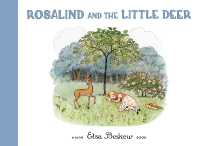- ホーム
- > 洋書
- > 英文書
- > Religion / Ethics
Full Description
The rabbinic sages of antiquity are known for their sophisticated and creative reading of Scripture. But beginning in the third century CE, these sages also took on extensive commentary on another kind of text: the sages' own teachings. Focusing on the first collection attesting to this branch of scholarship, the oft-neglected Talmud Yerushalmi, The Rise of Talmud argues that this new project presented a wide-ranging transformation of the sages' scholarly practice and self-perception. On the one hand, it engaged premises and methods distinct from those the sages applied to Scripture, such as textual criticism and the interpretation of texts in light of the individuals to whom they were attributed. On the other hand, this book shows, this distinct approach did not stem from preexisting differences in the conceptions of Scripture and rabbinic teachings: it reflected a broad reconceptualization of the tradition, diverging from how these teachings were construed by earlier generations. Recognizing these unique aspects of ancient Talmudic scholarship centers its development as a pivotal moment in Jewish intellectual history and offers a richer picture of rabbinic hermeneutics; it also allows us to situate it better among other scholarly traditions of the Greco-Roman world and to examine how different ideas, aims, and contexts shape textual scholarship—including our own.
Contents
Introduction
I. INDIVIDUATION
1: Who Is Speaking? Identification of Anonymous Teachings
2: The Sages, Opinionated: De'ah and Individual Inclination
3: The Switched Line: Shita and Reading for Consistency
4: Lip-Synching in the Grave: Narratives and Images of Attribution
II. IMPERFECTION
5: The Scattered Torah: The Problem of Textual Knowledge
6: Variae Recitationes: Comparison of Divergent Texts
7: It's Not Here: Emendations
8: Needy, Lost, and Kind of Divine: Intertextuality, Necessity, and Recontextualization
9: Conclusion: The More Humane Letters






